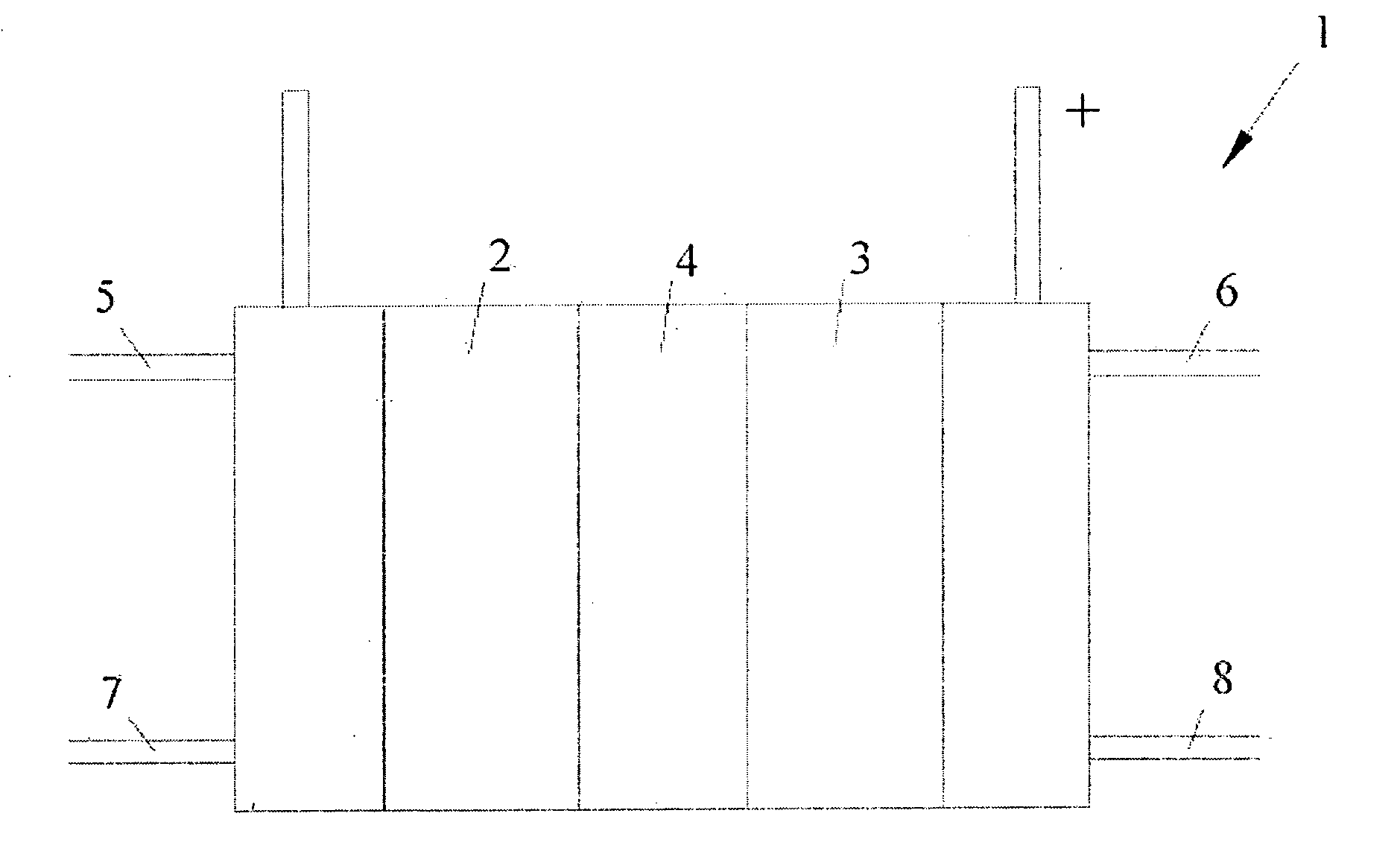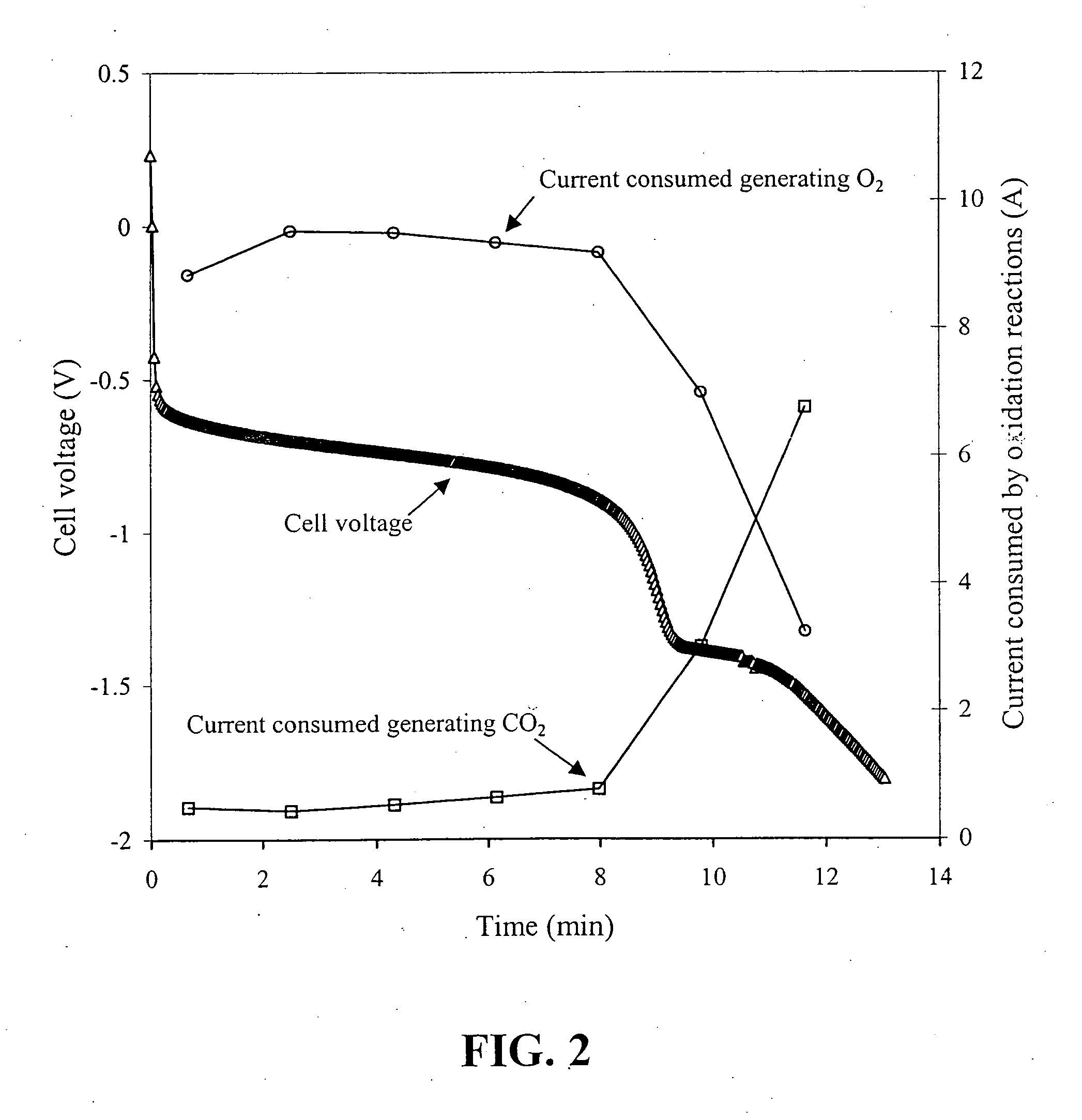Anode catalyst compositions for a voltage reversal tolerant fuel cell
- Summary
- Abstract
- Description
- Claims
- Application Information
AI Technical Summary
Benefits of technology
Problems solved by technology
Method used
Image
Examples
examples
[0045] A series of solid polymer fuel cells was constructed in order to determine how reversal tolerance would be affected by employing a corrosion resistant anode catalyst in combination with the incorporation of a second catalyst composition at the anode for the purposes of electrolyzing water.
[0046] A series of anode catalyst compositions were prepared as outlined in the following Table:
TABLE 1SampleFirst Catalyst CompositionSecond Catalyst CompositionA1Pt / Ru alloy supported on Vulcan—XC72R grade furnace black (fromCabot Carbon Ltd., South Wirral, UK),nominally 20% Pt / 10% Ru by weightA2Pt / Ru alloy supported on ShawiniganRuO2 supported on Shawiniganacetylene black, nominally 20% Pt / 10%acetylene black, nominally 20% RuRu by weight (the remainder being(as oxide) by weight (remaindercarbon)carbon and oxygen)A3Pt / Ru alloy supported on ShawiniganUnsupported RuO2 / IrO2, nominallyacetylene black, nominally 20% Pt / 10%a 90:10 atomic Ru / Ir ratioRu by weightA4Pt / Ru alloy supported on Shawi...
PUM
 Login to View More
Login to View More Abstract
Description
Claims
Application Information
 Login to View More
Login to View More - R&D
- Intellectual Property
- Life Sciences
- Materials
- Tech Scout
- Unparalleled Data Quality
- Higher Quality Content
- 60% Fewer Hallucinations
Browse by: Latest US Patents, China's latest patents, Technical Efficacy Thesaurus, Application Domain, Technology Topic, Popular Technical Reports.
© 2025 PatSnap. All rights reserved.Legal|Privacy policy|Modern Slavery Act Transparency Statement|Sitemap|About US| Contact US: help@patsnap.com



